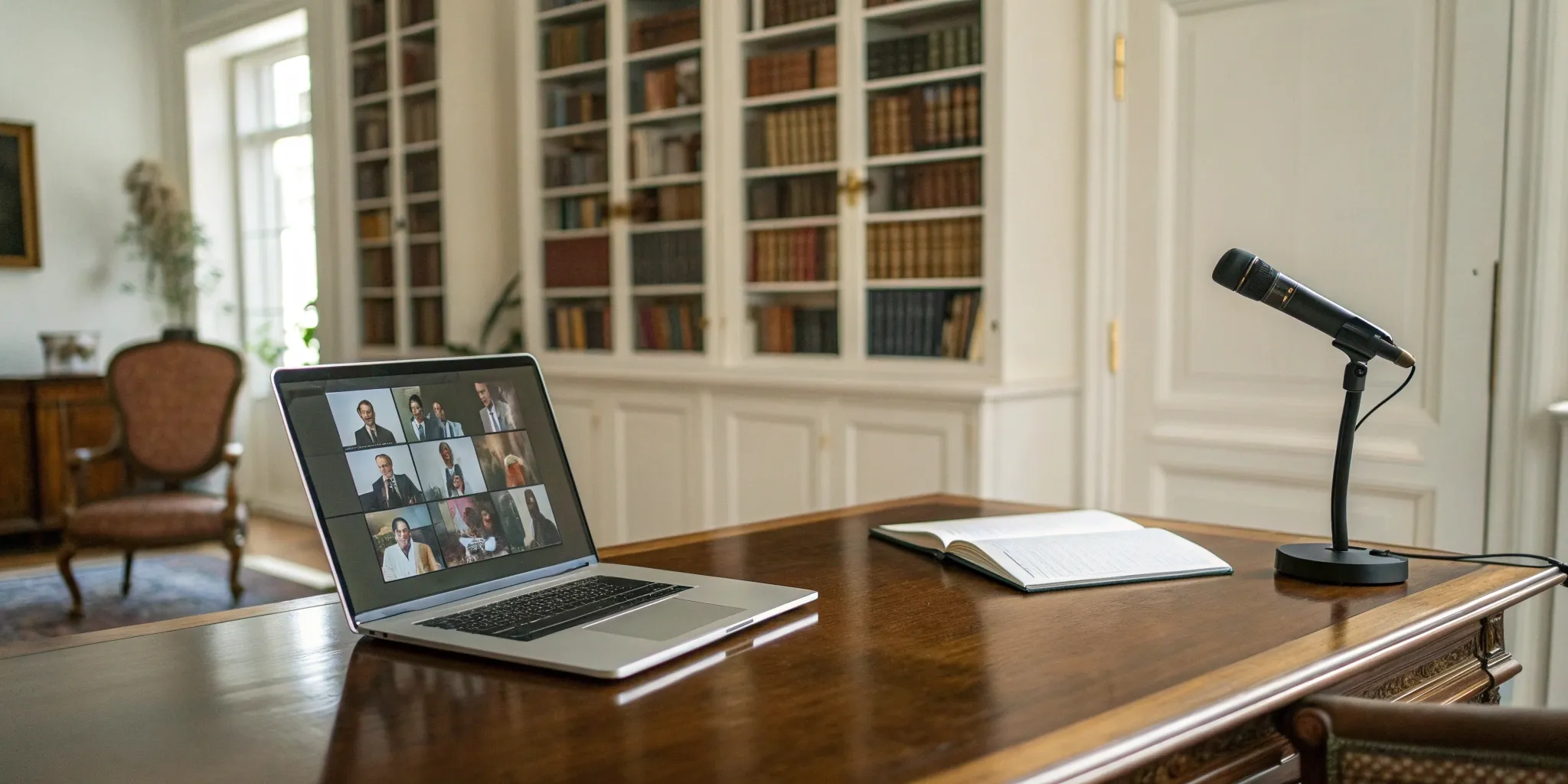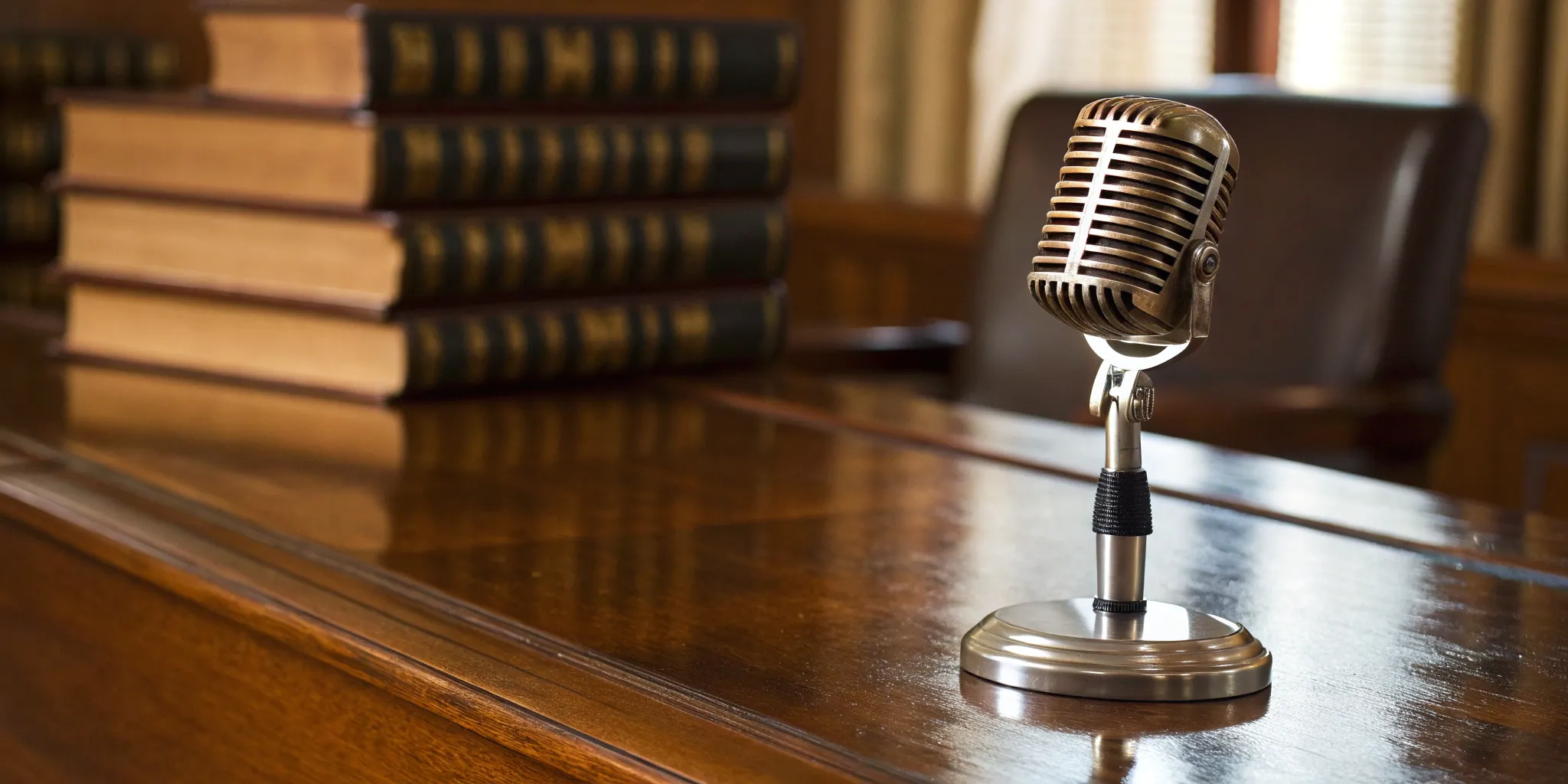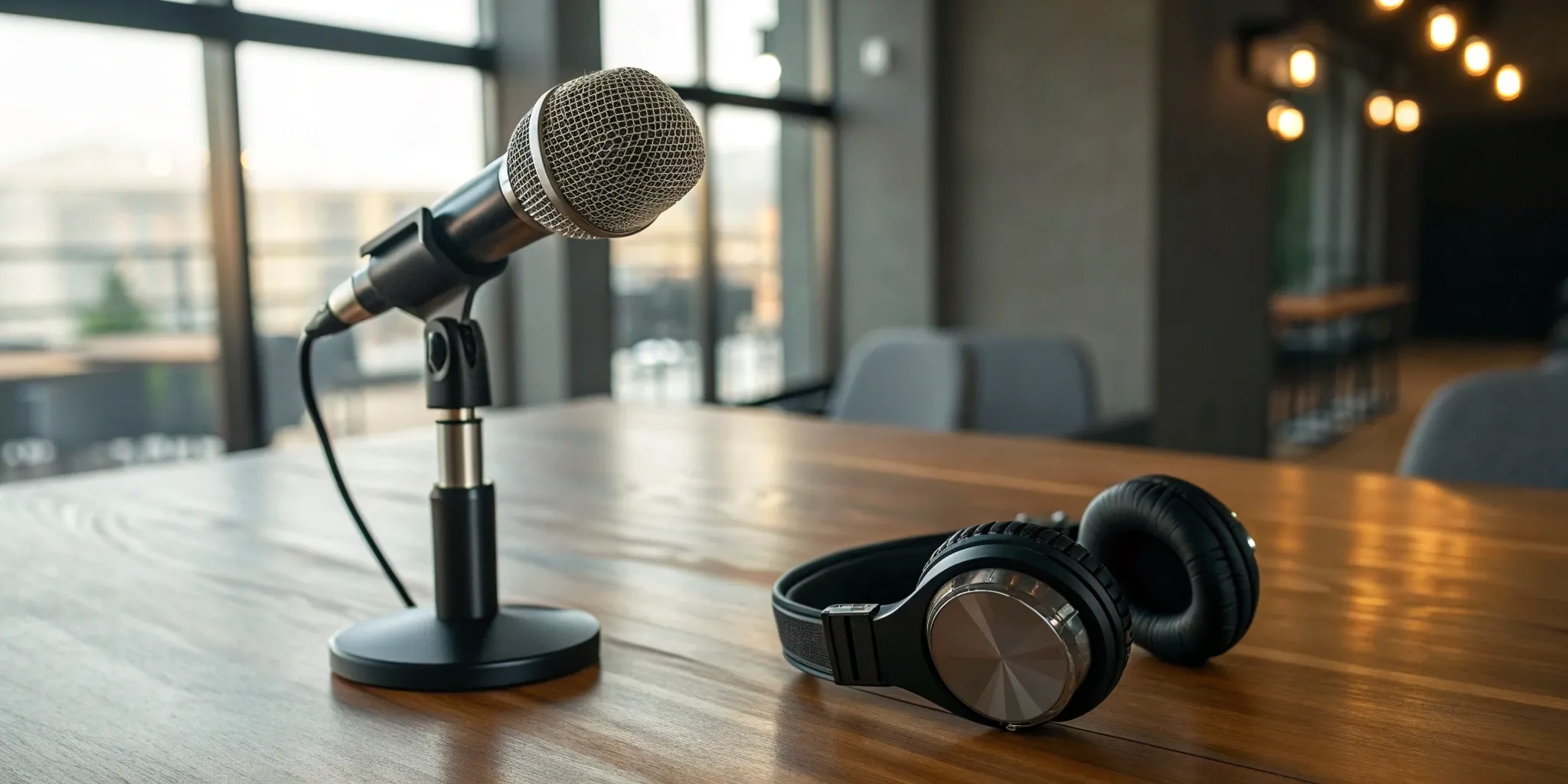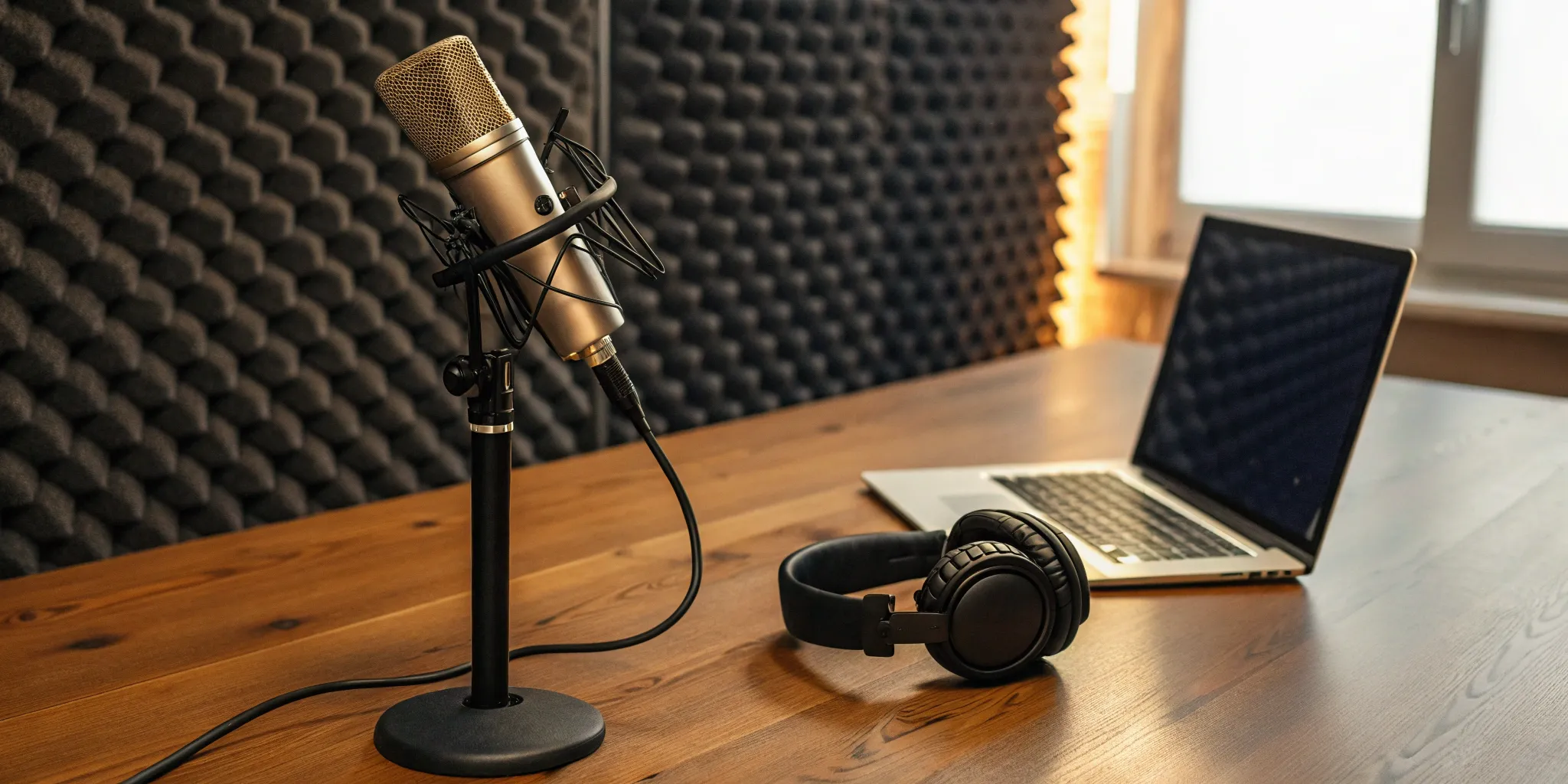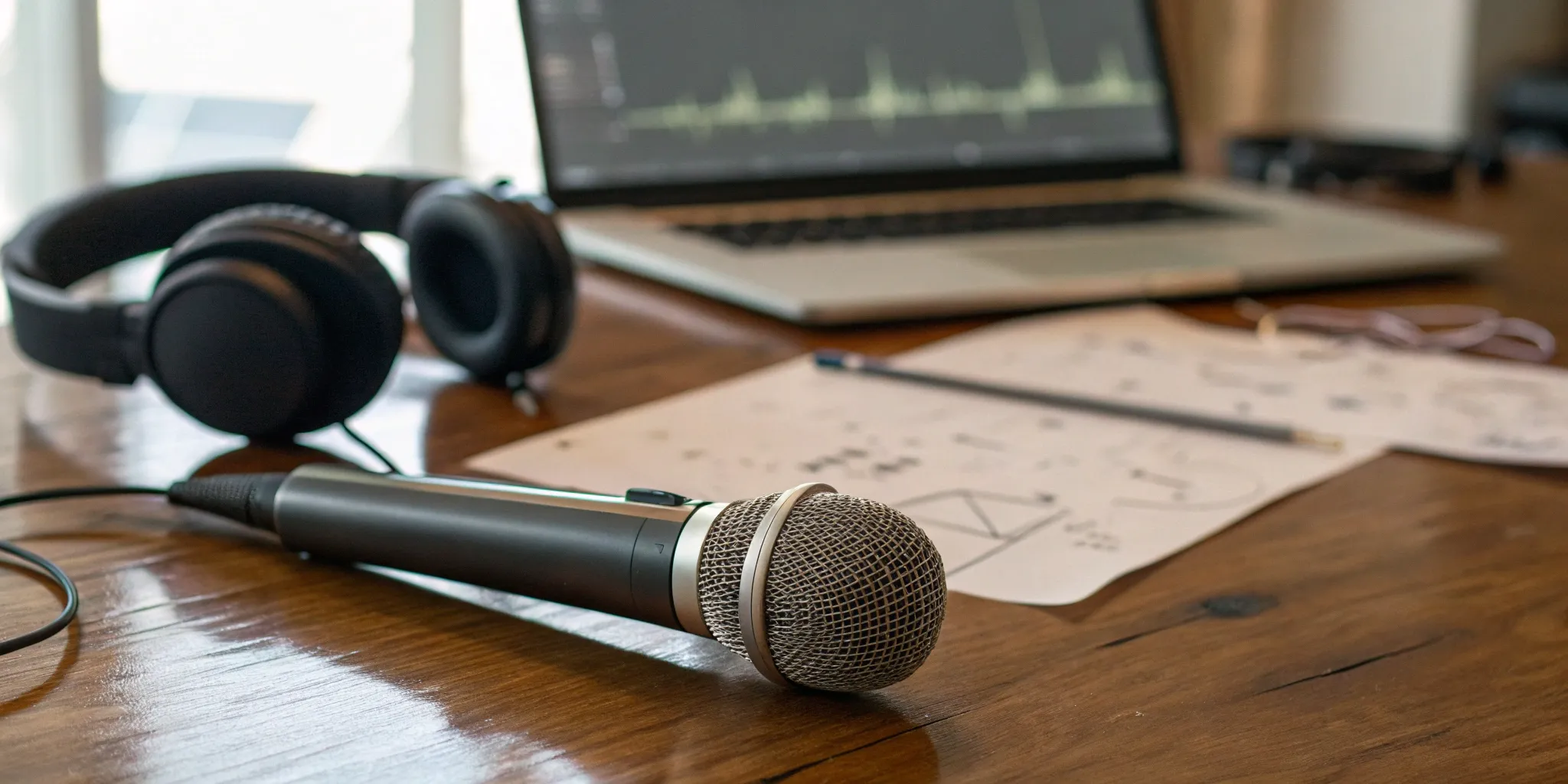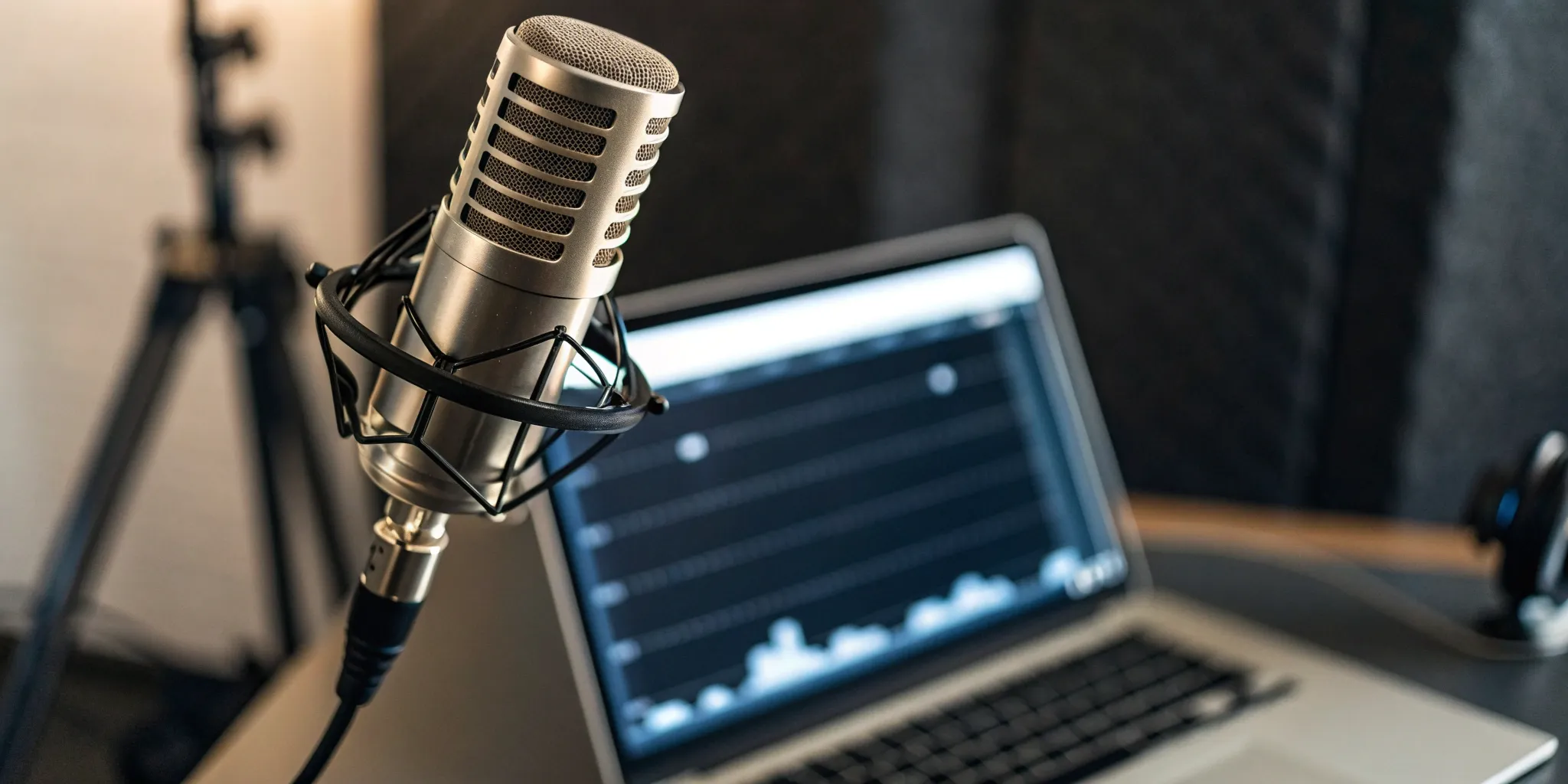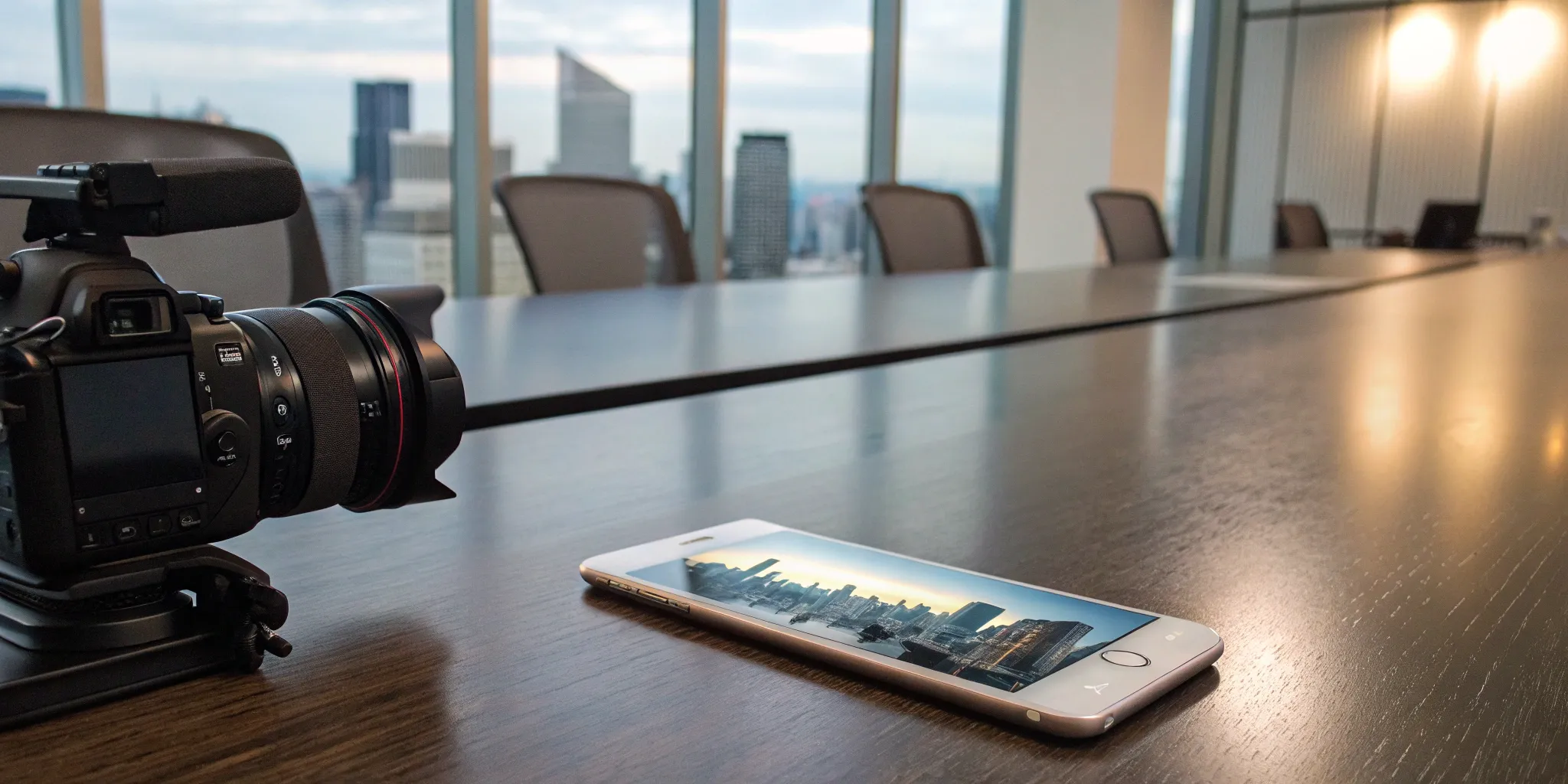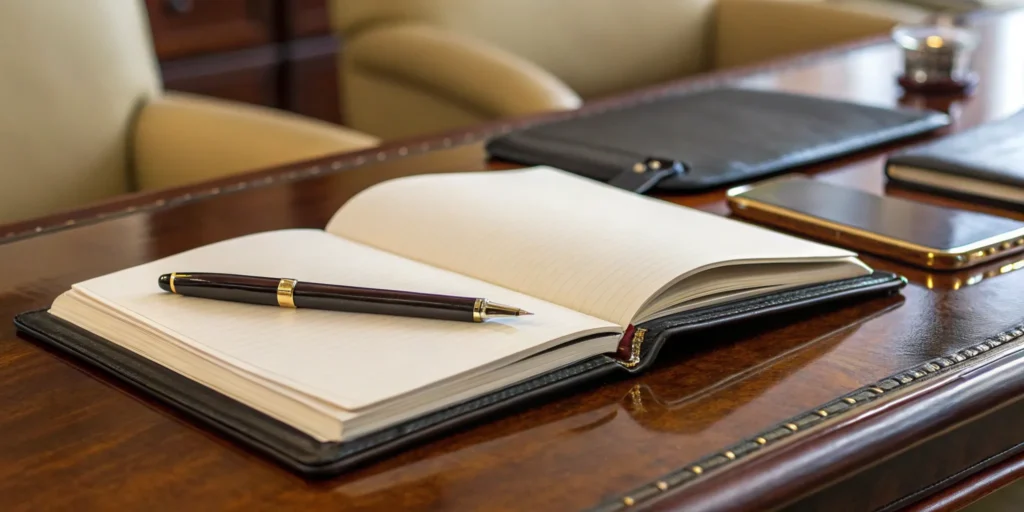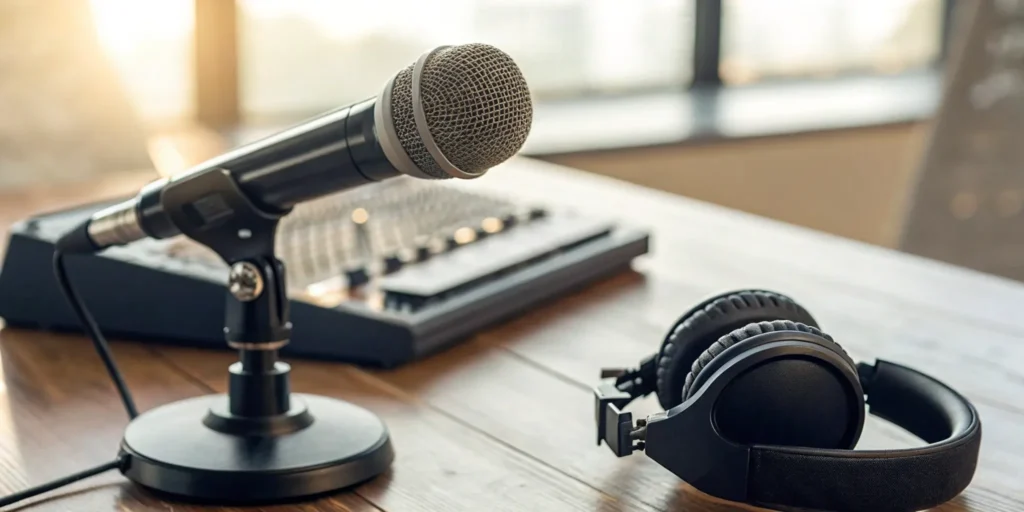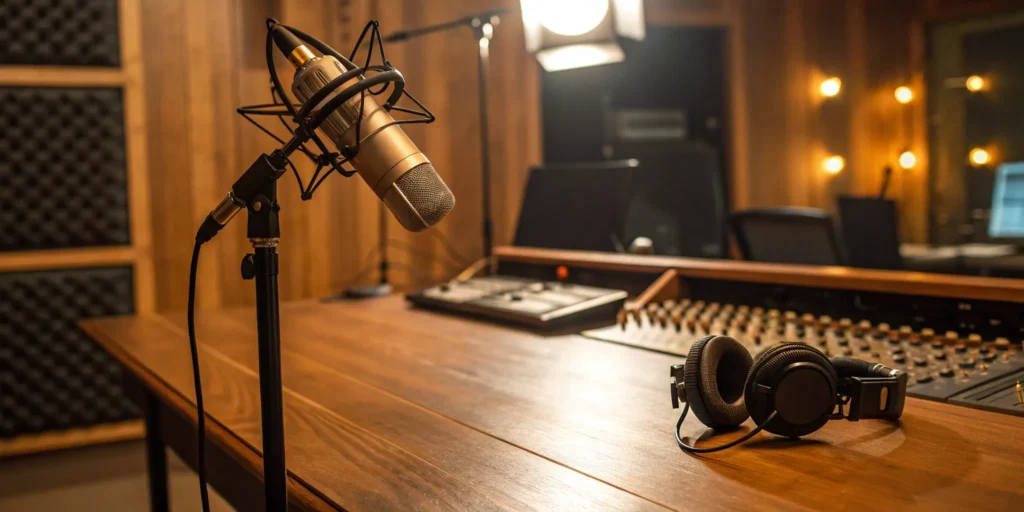When you step into a media interview, you’re entering a conversation where you can either follow or lead. Without preparation, it’s easy to let an interviewer’s questions dictate the entire discussion, potentially missing the chance to share your most important points. The goal is to control your own narrative. You want to walk away knowing you communicated your core message effectively and represented your work in the best possible light. This is the power of media training for authors. It provides the strategic framework to guide the conversation, handle unexpected questions gracefully, and ensure your key ideas are the ones that audiences remember.
Key Takeaways
- Treat Media Training as a Foundational Step: The most successful authors begin media training long before their book launch. Starting early gives you the time to build genuine confidence, internalize your core message, and establish your authority in your field.
- Provide Value, Don’t Just Pitch Your Book: An interview is a conversation, not a commercial. Focus on sharing your expertise and telling compelling stories that help the audience. This builds trust and credibility, making people naturally want to learn more from you.
- Make Every Media Win Work for You: A single appearance is a powerful asset. Leverage it to secure more interviews, build lasting relationships with journalists, and create a stream of social media content that reinforces your expert status long after the interview is over.
What is Media Training for Authors?
You’ve poured your heart, expertise, and countless hours into writing your book. Now, it’s time to share it with the world. But getting your message out there involves more than just a great manuscript; it requires you to be your book’s best and most compelling advocate. This is where media training comes in. Think of it as your personal coaching for handling any media opportunity with confidence and skill. It’s not about memorizing robotic answers or becoming someone you’re not. Instead, it’s a process designed to help you refine your core message, tell engaging stories, and connect authentically with any audience, whether you’re on a major TV network, a popular podcast, or a local radio show.
Media training is for anyone who wants to control their narrative. It equips you with the tools to answer tough questions gracefully, stay on message, and make a lasting impression. It’s a common misconception that this kind of preparation is only for high-level executives in a crisis. The truth is, media training is beneficial for people at all levels, especially authors who need to translate their written work into compelling conversation. At its core, it’s about learning the art of the interview so you can shine a spotlight on your work and your expertise.
Why It Matters for Your Book Promotion
Let’s be direct: a great book doesn’t sell itself. In a crowded market, you need to create buzz, and media attention is one of the most powerful ways to do that. When you appear in the media, you’re not just promoting a book; you’re inviting people into your world and showing them why your message matters. Effective media appearances get people excited about you and your work, which directly translates into book sales.
This is why it’s so important to think about media attention early, sometimes even before your book is finished. A polished, confident author is far more appealing to producers and journalists. When they know you can deliver a great interview, you become a go-to source, opening the door for more opportunities down the line.
Build Your Credibility and Authority
Your book is a fantastic starting point, but your media presence is what solidifies your status as an expert in your field. Every interview is a chance to build your authority and establish yourself as the go-to person for your topic. To do this, you have to do more than just talk about your book; you need to offer valuable insights, share compelling stories, and contribute to a larger conversation.
This is where the real work begins. As an author, you have to learn how the media works and how to present yourself professionally. Being prepared and easy to work with makes journalists and producers want to feature you again. This isn’t just about a one-time promotional push; it’s about building a long-term platform that will support your career for years to come. Our team at Leverage with Media specializes in helping authors make this exact transition from writer to recognized authority.
Debunking Common Media Training Myths
Many authors are hesitant about media training because of a few persistent myths. One of the biggest is the fear that training will make you sound scripted or inauthentic. In reality, good media training does the opposite. It helps you discover your most natural communication style and gives you the confidence to be yourself on camera. It’s about clarity, not conformity.
Another common myth is that a great book should speak for itself. While quality is crucial, you are the human connection to your work. People buy from people they know, like, and trust. Media training teaches you how to be that person. Finally, many authors who are comfortable with public speaking assume they don’t need training. But a media interview isn’t a speech; it’s a strategic conversation, and learning the rules of engagement is key to your success.
When Should You Start Media Training?
The short answer? Much sooner than you probably think. Many authors make the mistake of waiting until their book is about to hit shelves, thinking of media training as a last-minute polish for their launch week interviews. But that’s like training for a marathon the day before the race. True media readiness isn’t about a quick cram session; it’s about building a foundation of confidence and clarity that serves you long before, during, and after your book launch.
Starting early transforms media training from a reactive measure into a strategic tool for building your author platform. When you begin the process while you’re still writing or in the early stages of promotion, you give yourself time to internalize your key messages, practice your delivery, and get comfortable in the spotlight. This proactive approach allows you to start building relationships with the media and establishing your expertise in the field. When your book does launch, you’re not introducing yourself for the first time—you’re reinforcing your position as a go-to expert. Our PR packages are designed to build this kind of long-term momentum.
Before Your Book Launch
If your book launch is just a few weeks or months away, now is the time to get serious about media training. As publishing expert Jane Friedman notes, “Authors should begin working with the media before their book comes out. Waiting until launch day is too late.” Media outlets, from podcasts to morning TV shows, plan their editorial calendars far in advance. Pitching them on launch week is often too late to secure a spot. By starting your training and outreach early, you can land interviews that build anticipation and drive pre-orders. This pre-launch period is your chance to refine your soundbites, practice bridging from tough questions back to your core message, and ensure every interview opportunity counts.
While You’re Still Writing
This might sound early, but the ideal time to start thinking about media training is while you’re still deep in the writing process. Think of it as part of your book’s development. The skills you learn in media training—like how to distill complex ideas into clear, compelling messages—can actually help you sharpen the focus of your manuscript. More importantly, it allows you to start building your public profile as an expert on your topic long before your book is even finished. You can begin pitching yourself for podcast interviews or contributing articles related to your subject matter, establishing credibility and an audience that will be eager to buy your book when it’s finally released.
Why Waiting Is a Mistake
Putting off media training is one of the biggest missed opportunities for an author. When you wait, you sacrifice the chance to build critical pre-launch buzz that gets people excited about you and your work. A strong media presence can even be a powerful asset when you pitch a book proposal to publishers, as it demonstrates you have a platform and the skills to promote your work effectively. Without that groundwork, you’re starting from a standstill on launch day, trying to learn how to handle interviews while also managing the stress of a book release. Early training gives you the confidence to turn every media appearance into a powerful promotional tool for your author brand.
Master These Media Training Skills
Media training isn’t about creating a polished, robotic version of yourself. It’s about giving you the confidence and tools to be your most articulate, compelling self, even under the pressure of a live interview. When you master a few key skills, you can walk into any media appearance feeling prepared and in control. It’s your chance to not only promote your book but also to solidify your reputation as an expert in your field. Think of it as building a toolkit that allows you to handle any question, connect with any audience, and make a lasting, positive impression every single time.
Answer Any Question with the Accordion Method
One of the most effective techniques for handling interview questions is the “Accordion Method.” It ensures you’re prepared for any situation by having three versions of your answer ready to go. First, have a short answer—this is your headline or soundbite, perfect for a quick quote. Next, prepare a medium answer that adds a bit more detail without getting lost in the weeds. Finally, have your long answer ready. This version starts with your main point and then expands with specific examples, data, or anecdotes. This method keeps you from rambling and empowers you to deliver your message clearly, whether you have 15 seconds or five minutes.
Craft Your Core Message and Tell Great Stories
Reporters and producers are always looking for a great story. Simply talking about your book isn’t enough; you need to frame your expertise within a compelling narrative. A powerful story for the media has three key parts. First is the hook, which answers the question: “Why is this important right now?” Next comes the twist, which explains what makes your story different or surprising. Finally, you need the takeaway: What do you want the audience to learn, feel, or do after hearing you? By crafting several core stories using this structure, you can connect your book’s themes to your audience’s lives in a way that is both memorable and meaningful.
Develop Your On-Camera Presence
How you appear on camera is just as important as what you say. Your body language and presentation communicate confidence and credibility before you even speak a word. Unless the topic is somber, remember to smile—it helps you appear warm and approachable. For virtual interviews, train yourself to look directly into the camera lens, not at your own face on the screen. This creates the feeling of direct eye contact with the viewer. If you’re in a studio, pick one of the interviewer’s eyes and maintain gentle focus. Your on-camera presence is a skill you can practice and improve, so take the time to get comfortable in front of a lens.
Stay Composed Under Pressure
Even with perfect preparation, you might get a question that throws you off. The key is to stay calm and collected. You don’t have to answer immediately. It’s perfectly acceptable to take a brief pause to gather your thoughts. Remember, perfection is not the goal; connection is. Stick to what you know and don’t feel pressured to speculate. If you’re asked a difficult or off-topic question, you can use a bridging phrase to pivot back to your key messages. Phrases like, “That’s an interesting point, and what’s most important to remember is…” can help you gracefully regain control of the conversation and ensure you make the most of your time.
How to Prepare for Any Media Appearance
Every media opportunity is a chance to connect with a new audience, but each format requires a slightly different approach. Whether you’re stepping in front of a camera, leaning into a microphone, or typing out answers for a feature article, preparation is what separates a good appearance from a great one. It’s not about having a rigid script; it’s about building a flexible framework of key messages, stories, and answers that you can adapt to any situation.
Think of it like packing for a trip. You don’t know exactly what will happen each day, but you bring outfits for different occasions. For media, your “outfits” are your talking points, anecdotes, and answers. The goal is to feel so comfortable with your material that you can be present, authentic, and engaging, no matter what comes your way. By understanding the nuances of each platform—from the visual demands of television to the conversational flow of a podcast—you can show up as the confident, credible expert you are. Our clients at Leverage with Media consistently find that this preparation makes all the difference in sharing their stories effectively.
Prepare for TV Interviews
Appearing on television can feel like the big leagues, but with the right preparation, you can walk on set with confidence. The key is to anticipate what’s coming. Before any TV spot, you should identify all the questions you might be asked about your book, your expertise, and your story. Brainstorm the easy questions, the tough ones, and even the slightly off-topic ones. Then, practice delivering your answers clearly and concisely. TV moves fast, so you need to be able to share your core message in memorable soundbites. Also, remember that television is a visual medium. Plan your outfit—solid, bright colors work best—and be mindful of your body language. Sit up straight, smile, and make eye contact with the interviewer to build a connection with them and the audience at home.
Nail Your Podcast and Radio Appearances
For podcasts and radio, your voice is your most powerful tool. Without visual cues, your tone, energy, and clarity are what will keep listeners hooked. Before you record, always research the show and the host. Understand their audience and format so you can tailor your stories and examples to what they’ll find most interesting. It’s incredibly helpful to practice what you’ll say out loud. This helps you catch any awkward phrasing and get comfortable with your key points. A great technique is the “Accordion Method,” where you have short, medium, and long answers ready for common questions. This allows you to be flexible and adapt to the natural flow of the conversation, ensuring you sound prepared but not rehearsed.
Handle Print and Online Interviews
Print and online interviews are fantastic opportunities to establish your authority on a topic. Whether you’re answering questions over email or speaking with a journalist on the phone, your goal is the same: show you are an expert in your field. This credibility is what helps readers find and trust your work. For written Q&As, take the time to craft thoughtful, polished answers. Write in a way that’s easy to quote, using clear and concise language. For phone or video interviews with print journalists, be ready with compelling anecdotes and specific data points that bring your expertise to life. Remember, you’re not just promoting a book; you’re building a brand as a go-to source in your niche.
Check Your Tech and Presentation
In an era of virtual interviews, your technical setup is just as important as your talking points. A poor connection or bad lighting can distract from your message and make you seem unprofessional. Before any virtual appearance, run through a quick tech check. Test your internet connection, make sure your audio is crisp (an external microphone is always a good idea), and check your lighting. You should be well-lit from the front, with no distracting shadows. Most importantly, if you’re on camera, look directly into the lens, not at your own face on the screen. This creates a direct connection with the viewer, making you appear more engaged and confident. A clean, professional background is the final touch to ensure you look polished and ready.
Common Media Challenges (And How to Overcome Them)
Stepping into the media spotlight can feel daunting, even for the most accomplished CEOs and authors. It’s completely normal to feel a mix of excitement and nerves. The good news is that the most common hurdles are things you can prepare for and overcome. Think of it less as a test and more as a conversation—one where you get to share the message you’re passionate about. With the right mindset and preparation, you can handle any media situation with confidence and grace.
Conquer Your Fear of the Spotlight
If the thought of a camera or microphone makes your palms sweat, you’re not alone. The key is to start building your comfort level long before your book hits the shelves. As media expert Jane Friedman advises, authors should begin working with the media before their book comes out. Waiting until launch day is too late. Start small with local podcasts or blog interviews to get your feet wet. Each appearance is a chance to practice your key messages and get more comfortable sharing your story. Remember, confidence isn’t something you have; it’s something you build. The more you do it, the more natural it will feel.
Share Your Expertise, Not Just Your Book
One of the biggest mistakes authors make is focusing too much on selling their book during an interview. Journalists and their audiences are looking for valuable insights, not a sales pitch. Shift your focus from “buy my book” to “here’s what I know.” When you position yourself as an expert in your field, you provide genuine value and naturally draw people to your work. Think about the core problems your book solves or the unique perspective you offer. By sharing your expertise freely, you build trust and authority, making listeners and readers eager to learn more from you—and yes, that often means buying your book.
Understand What Journalists Really Want
Many authors believe a great press release is all it takes to land major media coverage. In reality, that’s rarely the case. Journalists are inundated with pitches every day. To stand out, you need to understand what they’re actually looking for: a compelling story, a fresh angle on a current event, or an expert who can provide sharp, insightful commentary. Don’t just rely on your publisher to make these connections. You need to be proactive. Take the time to research journalists, understand their beat, and offer them something that helps them do their job better. It’s about building a mutually beneficial relationship, not just sending a generic announcement.
Build Lasting Media Relationships
A single interview can be great, but the real power lies in building long-term relationships with the media. When a producer or reporter knows they can count on you for a thoughtful quote or a last-minute interview, they will come back to you again and again. Say “yes” to opportunities, even if they feel small or you’re nervous. Be responsive, helpful, and easy to work with. Every interaction is a chance to prove you’re a reliable source. This approach turns one-off appearances into a steady stream of media opportunities, creating a powerful flywheel effect for your brand. If you’re ready to start building these connections, you can always book a call with our team to discuss a strategy.
Use Social Media to Amplify Your Message
Media training prepares you for the interview, but social media is where you continue the conversation. Think of it as your personal stage, a place where you can directly connect with readers, share your expertise, and control your narrative long after the cameras stop rolling. Every media appearance you land is a powerful asset, and social media is the tool you use to get the most mileage out of it. By treating your social platforms as an essential part of your brand strategy, you create a powerful cycle: media hits drive people to your social channels, and your engaged social following makes you more attractive to the media.
It’s not about posting constantly or chasing viral trends. It’s about being strategic and authentic. A well-managed social media presence reinforces the authority you build in interviews and gives your audience a place to connect with you on a more personal level. This is where you can share more than just your book; you can share your mission, your insights, and the story behind the story. By integrating your media appearances with a thoughtful social media approach, you don’t just get a moment in the spotlight—you build a lasting platform.
Create a Strategic Content Plan
Posting on social media without a plan is like giving an interview without preparing your key messages—it’s messy and ineffective. A strategic content plan ensures every post serves a purpose, whether it’s to build anticipation for your book, share your expertise, or connect with your readers. The most successful authors are those who treat social media as a core part of their brand-building strategy. Start by outlining a few content pillars that align with your book’s themes and your personal brand. These could include key topics from your book, industry insights, personal stories, and promotional updates. A simple calendar can help you map out your posts, ensuring a consistent and balanced mix of content that keeps your audience engaged without feeling overly promotional.
Engage Authentically with Your Audience
Social media is a two-way street. It’s not just a place to broadcast your message; it’s a forum to build a genuine community around your work. You can generate excitement and interest by sharing updates, offering exclusive content, and actively engaging with your followers. Ask questions, respond to comments, and show appreciation for your readers. This interaction fosters a sense of loyalty and makes your audience feel personally invested in your success. Authenticity is everything. You don’t need a slick, corporate presence. Readers want to connect with the person behind the book, so let your personality shine through. This genuine connection is what turns casual readers into dedicated fans who will champion your work.
Share Behind-the-Scenes Content
One of the most powerful ways to build a connection with your readers is by pulling back the curtain. Sharing behind-the-scenes content allows your audience to connect with your creative process and personal journey, making your author brand more relatable and human. You could post a photo of your writing space, share a short video about a breakthrough you had while working on a chapter, or talk about the real-life experiences that inspired your book. This kind of content builds a more intimate relationship with your readers. It shows them the hard work, the passion, and the person behind the pages, transforming your book from a product into a piece of a larger, more compelling story—yours.
Turn Media Appearances into Social Content
Every media interview is a content goldmine. Don’t let a great appearance fade away after it airs. Instead, leverage those moments by turning them into a stream of content for your social platforms. Before an interview, post about it to let your followers know when to tune in. Afterward, share the link to the article, podcast, or video clip. You can pull out a powerful quote and create a simple graphic, or post a short video clip of a key moment. Sharing these appearances not only extends their reach but also reinforces your credibility. It shows your audience that you are a recognized expert in your field, which in turn builds trust and drives interest in your book.
How to Maximize Your Media Appearances
Landing a media appearance is a huge win, but your work isn’t over when the interview ends. The real magic happens when you strategically leverage that placement to build momentum for your author brand. Think of each interview as a stepping stone, not a final destination. By turning a single appearance into a powerful marketing asset, you can attract more media opportunities, connect with a wider audience, and solidify your status as a go-to expert in your field. It’s all about making your media wins work harder for you long after the spotlight fades.
Follow Up with Journalists the Right Way
The simplest way to stand out and build a positive reputation with the media is by being thoughtful and professional after your interview. A prompt, personal thank-you note goes a long way. Send an email to the journalist, producer, or host who featured you, expressing your gratitude for their time and the opportunity.
Beyond a simple thank you, make it easy for them to remember you. Connect with them on a professional network like LinkedIn. When your feature goes live, share it across your own platforms—your website, social media channels, and newsletter—and be sure to tag the journalist and the outlet. This not only shows your appreciation but also helps drive traffic to their work, which they’ll definitely notice. This simple follow-up process is the first step in building a relationship that can lead to future collaborations.
Turn One Interview into Many
Media begets media. Once you have one great placement under your belt, you can use it as social proof to secure even more. Think of it as building a portfolio of credibility. When you or your PR team pitch you to another outlet, being able to mention you were recently featured on a respected podcast or in a well-known publication makes you a much more attractive guest.
Start by creating a press or “As Seen On” page on your website to showcase your media wins. Add the logos of the outlets that have featured you to your email signature and speaker one-sheet. This immediately signals your authority to anyone you connect with. Each interview builds on the last, creating a snowball effect that can lead to bigger and better opportunities. You can see how our clients leverage press to build this kind of momentum.
Cultivate Long-Term Media Relationships
Your goal shouldn’t be a single transaction but a lasting professional relationship. Journalists and producers are always on the lookout for reliable, articulate experts they can call on for a quote or an interview, often on a tight deadline. By being responsive, prepared, and easy to work with, you can become one of their trusted sources.
Always try to say “yes” when an opportunity comes your way, even if it feels a little outside your comfort zone. Turning down requests can make contacts hesitant to reach out again. Stay on their radar in a genuine way by occasionally engaging with their work online or sending a quick note if you see an article of theirs you enjoyed. By positioning yourself as a helpful resource, you’re not just pitching your book; you’re building a network of media contacts who will think of you first for future stories.
Track and Measure Your Success
Sharing your media appearances isn’t bragging—it’s a crucial part of your author platform. Your audience wants to celebrate your successes with you, and seeing you featured in the media reinforces your credibility and expertise. When an article, podcast, or TV segment goes live, make a plan to share it widely. Post the clips, link to the articles, and pull out key quotes to create fresh content for your social media channels.
This also helps you understand what’s resonating. Keep track of your appearances and note any corresponding spikes in website traffic, book sales, or social media engagement. This data is invaluable for refining your messaging and identifying which types of media outlets are the best fit for you and your book. By tracking your success, you can focus your efforts on the opportunities that deliver the biggest impact for your brand.
How to Choose the Right Media Training Program
With so many options out there, picking the right media training program can feel like a big decision. The best fit for you will depend on your budget, timeline, and personal learning style. Think of it less as a one-size-fits-all solution and more as finding a partner to help you build confidence and sharpen your message. Let’s walk through the key factors to consider so you can invest your time and resources wisely.
Find a Program with These Key Components
A great media training program goes beyond just telling you to sit up straight and smile. It should focus on the foundation of all successful media appearances: your message. Look for a program that helps you craft your core message and then teaches you how to adapt it for different audiences and formats. The best training will include on-camera practice with direct, constructive feedback. You should walk away knowing how to answer tough questions, tell compelling stories, and stay on point, no matter what curveballs a journalist throws your way.
Decide Between Group and Individual Training
Your next decision is whether to learn in a group or go for one-on-one coaching. Group workshops are fantastic for learning from others’ experiences and practicing in front of an audience. You get the benefit of peer feedback in a supportive, collaborative environment, and it’s often a more budget-friendly option. On the other hand, individual training offers a completely personalized experience. Your coach can focus entirely on your specific goals, your book, and your unique speaking style. If you have a major TV appearance lined up or want to work on a specific challenge, the focused attention of individual coaching is invaluable.
Work with a Pro vs. DIY Training
While you can certainly find books and online videos about media appearances, there’s no substitute for professional guidance. Working with an experienced media coach or a PR agency gives you access to industry knowledge and an objective perspective you just can’t get on your own. A pro can pinpoint your blind spots and provide tailored feedback to help you improve quickly. If you’re on a tight budget, you can still take a DIY approach by recording yourself and asking a trusted friend for feedback. A hybrid model also works well—handle the basics yourself, then book a consultation with an expert to refine your skills before a big interview.
Start Small with Local Media
You don’t need to land a national morning show right out of the gate. In fact, it’s better if you don’t. Starting with local media is a brilliant strategy for building your confidence and portfolio. Local newspapers, community radio shows, and regional podcasts are often looking for experts and are more accessible than national outlets. Each interview is a chance to practice your messaging and get comfortable in a lower-stakes environment. These appearances create valuable clips you can share on your website and social media, which helps you build credibility and attract even bigger media opportunities down the road.
Related Articles
- Why PR Is Essential for Authors in 2025
- Nonfiction Book PR Agencies: What Authors Should Know
- Blog Archives – Leverage with Media PR
Frequently Asked Questions
I’m already comfortable with public speaking. Do I really need media training? That’s a great question, and it’s one I hear a lot. While public speaking skills are a fantastic foundation, a media interview is a completely different ballgame. A speech is a monologue where you have full control over the content and flow. An interview is a dynamic conversation where you need to answer someone else’s questions while still guiding the discussion back to your key points. Media training helps you master that art of strategic conversation, so you can handle tough questions gracefully and make your point effectively, even when you only have a few seconds.
How can I make a technical or complex topic from my book interesting to a general audience? The key is to stop thinking about explaining your topic and start thinking about telling a story. Instead of focusing on the data or the technical details, focus on the human element. What problem does your expertise solve for the average person? What surprising insight can you share that will change their perspective? Use analogies and real-world examples to make your ideas tangible. Your goal isn’t to teach them everything you know, but to give them a compelling takeaway that makes them curious to learn more from your book.
What’s the single biggest mistake you see authors make in their first media appearance? Without a doubt, the most common mistake is treating the interview as a commercial for their book. It’s natural to want to sell copies, but journalists and audiences are looking for value, not a sales pitch. When you focus only on promoting your book, you miss the opportunity to establish yourself as a credible expert. Instead, shift your mindset to generously sharing your knowledge. When you provide genuine insights and solve a problem for the audience, you build trust and authority, which naturally makes people want to buy your book.
What if a journalist asks me a question I don’t know the answer to? First, don’t panic, and definitely don’t guess. It’s perfectly acceptable not to have every single statistic memorized. The best approach is to be honest and then pivot. You can say something like, “That’s a great question, and while I don’t have the specific data on that, what I can tell you is…” This allows you to gracefully acknowledge the question while redirecting the conversation back to your core message and the topics you know inside and out. It shows you’re confident and in control, not that you’re uninformed.
Realistically, how far in advance of my book launch should I start this process? Ideally, you should start thinking about your core messages while you’re still writing the book. However, the most critical period for dedicated media training and outreach begins about three to four months before your launch date. Media outlets plan their content calendars far in advance, so this gives you enough time to practice your delivery, refine your pitch, and start securing interviews that will build buzz. Waiting until the month of your launch is often too late to land the kind of placements that make a real impact.

